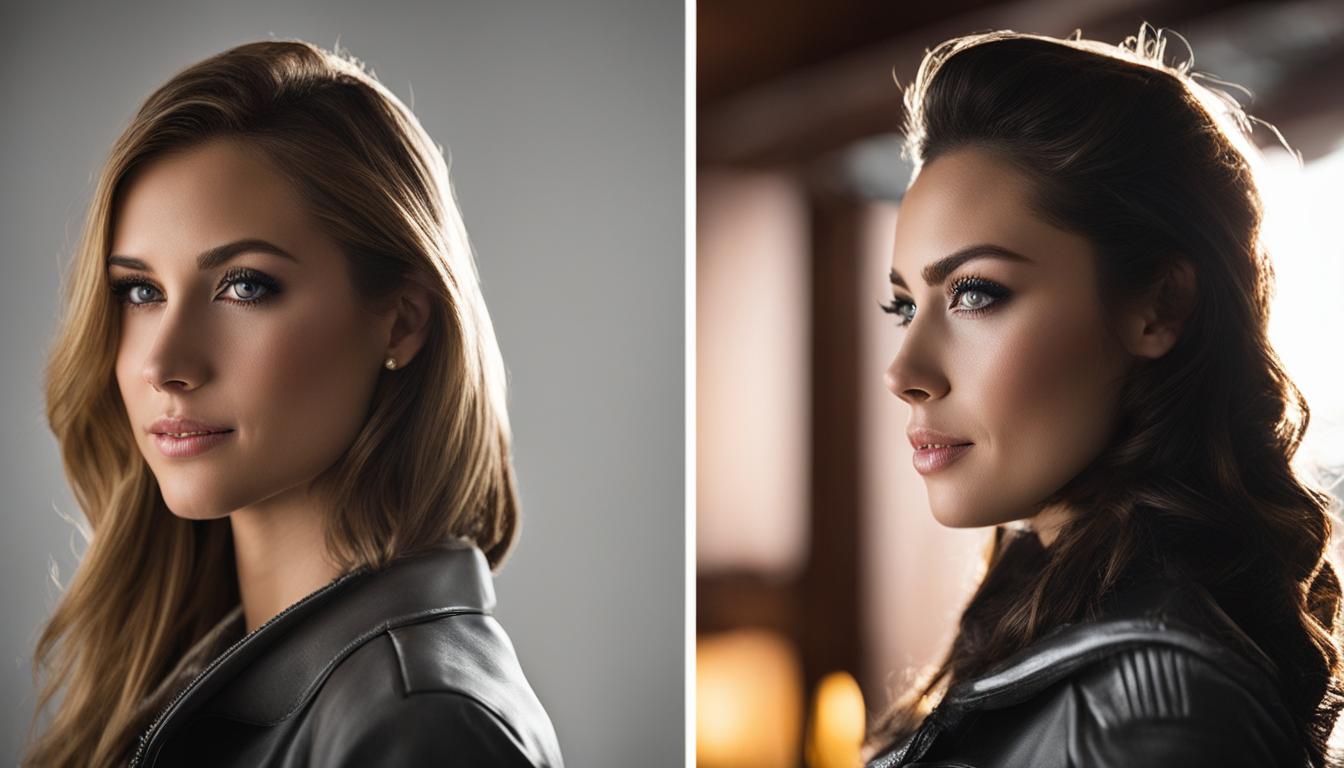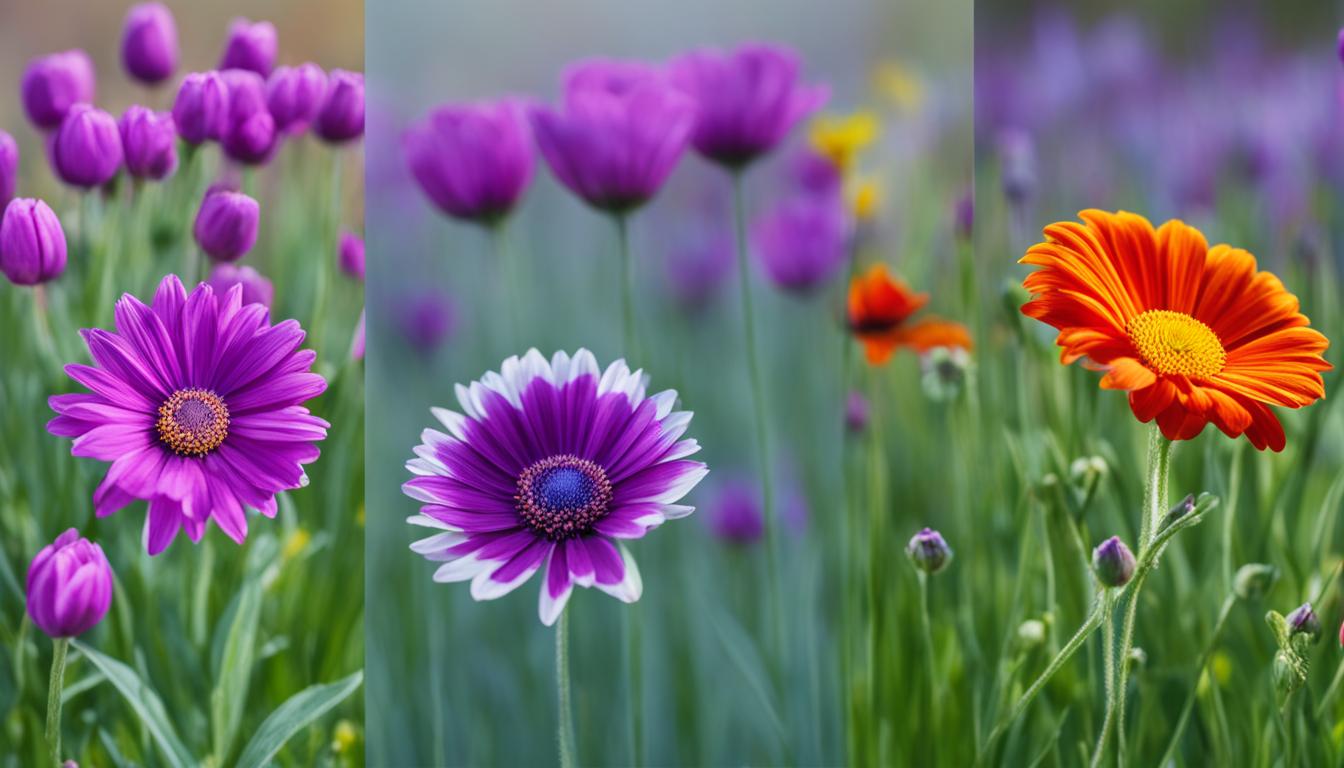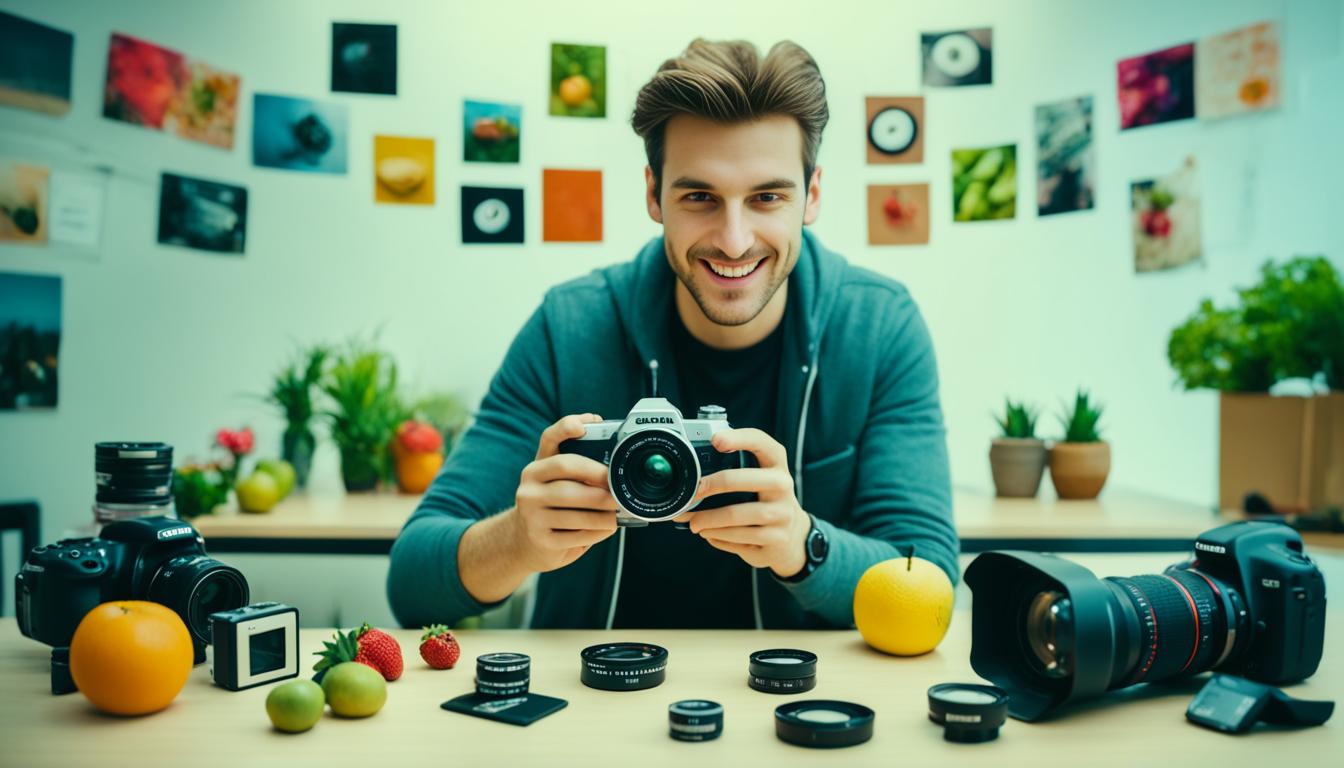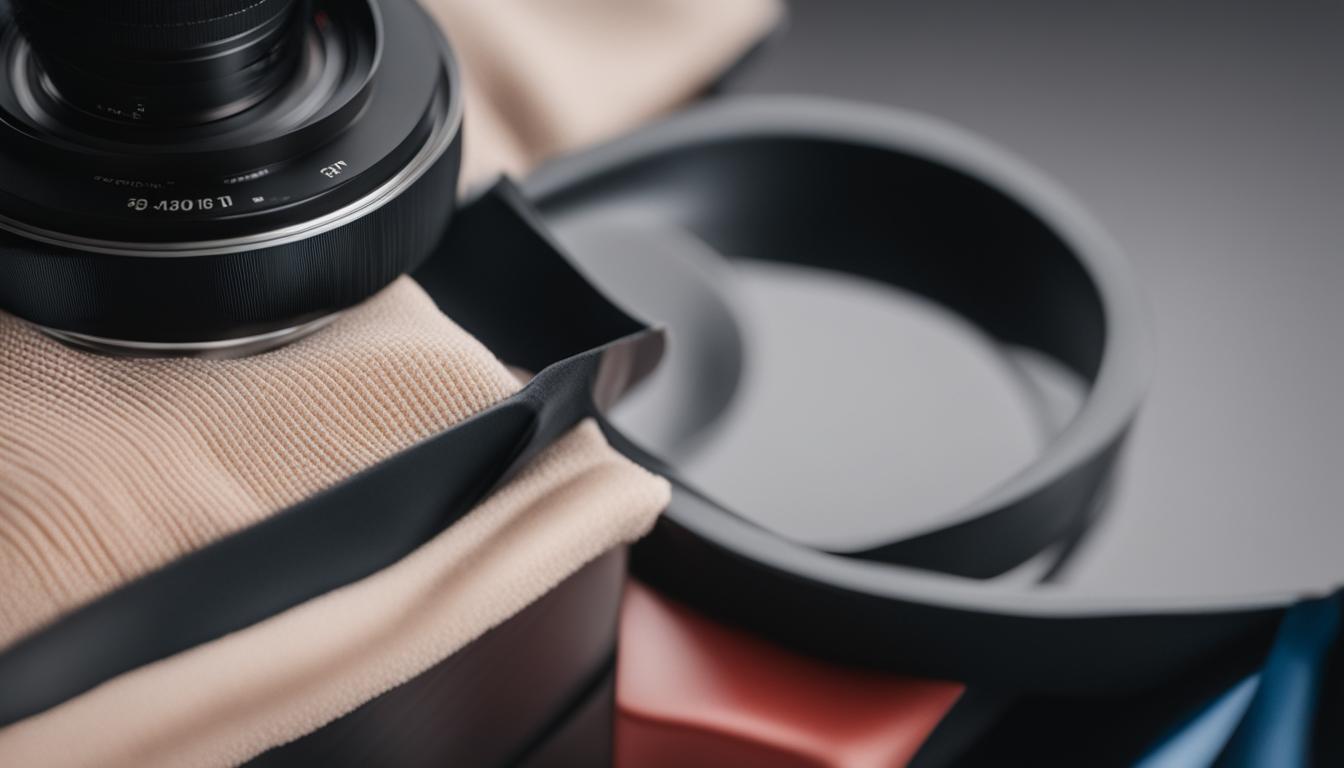In the world of photography, capturing the perfect shot often requires mastering the art of flash photography. Whether you are a beginner exploring the wonders of light or a professional seeking to elevate your photography game, understanding the differences between on-camera and off-camera flash is essential. In this guide, we will delve into the world of flash photography, discussing the techniques, tips, and best practices for using on-camera and off-camera flash.
Flash photography involves the use of artificial light to illuminate a subject, allowing photographers to control the lighting conditions and enhance the overall quality of their photos. While the primary purpose of a flash is to provide additional light in low-light situations, it can also be used creatively to add depth, drama, and interest to your images.
Let’s explore the distinctions between on-camera and off-camera flash and uncover the benefits and limitations of each. Together, we will unlock the secrets to capturing stunning photographs using flash photography techniques.
Key Takeaways:
- Flash photography utilizes artificial light to enhance photo quality and control lighting conditions.
- On-camera flash is convenient and easy to use, but it can produce harsh and unflattering light.
- Off-camera flash offers more flexibility and creative possibilities, allowing for customizable lighting effects.
- Mastering flash photography requires practice, experimentation, and a thorough understanding of flash control and techniques.
- Choosing between on-camera and off-camera flash depends on your specific needs and desired photographic outcomes.
Understanding On-Camera Flash
On-camera flash is a widely used technique in photography, where the flash unit is mounted directly on the camera. This type of flash offers convenience and ease of use, making it a popular choice for photographers. The light emitted from an on-camera flash is typically directed straight towards the subject, ensuring proper illumination.
The advantages of using on-camera flash are numerous. Firstly, it provides photographers with a quick and straightforward way to brighten their subjects. The ease of control and synchronization between the flash and camera make capturing well-exposed images a breeze. Additionally, on-camera flash units often come with a swivel head, allowing for the adjustment of the light direction to avoid unwanted shadows.
However, it’s important to be aware of the limitations of on-camera flash. One of the drawbacks is the potential for producing harsh and unflattering light. The direct and frontal lighting can create strong highlights and deep shadows, which may not be aesthetically pleasing. Furthermore, the options for diffusing the light are limited compared to off-camera flash setups, resulting in a less soft and natural lighting effect.
In summary, on-camera flash offers the advantages of convenience and easy control, making it a popular choice for many photographers. However, it’s important to be mindful of the limitations it presents, such as the potential for harsh lighting and limited diffusing options.
Exploring Off-Camera Flash
Off-camera flash is a powerful technique in flash photography that involves removing the flash from the camera and using it separately. This method provides photographers with increased creativity and flexibility in positioning the light, resulting in stunning and professional-quality photographs. Whether you’re a seasoned professional or a beginner looking to enhance your skills, understanding the advantages of off-camera flash and mastering the associated techniques can take your photography to new heights.
Off-camera flash offers several compelling advantages over on-camera flash. By decoupling the flash from the camera, you gain better control over the lighting conditions, allowing you to achieve specific desired effects. This technique provides more freedom in manipulating light angles, creating dramatic shadows, and highlighting particular areas of your subject. Additionally, off-camera flash allows you to use larger diffusers and modifiers, enabling you to shape and soften the light to create flattering and customizable lighting effects.
Advantages of Off-Camera Flash
- Enhanced creativity and flexibility in positioning the light.
- Ability to create dramatic shadows and achieve desired lighting effects.
- Utilization of larger diffusers and modifiers for customizable lighting.
Off-camera flash can be connected to the camera through a cable or wirelessly using a dedicated wireless system. This offers convenience and the freedom to experiment with different lighting setups without the restraints of a physically attached flash.
Professional photographers often choose off-camera flash for its ability to provide more control and creative possibilities. By mastering off-camera flash techniques, you can take your photography to the next level and produce striking and captivating images that stand out from the crowd.
“Off-camera flash offers photographers the flexibility to position the light creatively and achieve stunning lighting effects.”
From fashion and portrait photography to product and still-life photography, off-camera flash opens up a world of possibilities for capturing visually compelling and professionally lit images. Experimenting with off-camera flash techniques such as fill lighting, backlighting, and using modifiers like umbrellas and softboxes allows you to create unique and impactful photographs that leave a lasting impression.
Off-Camera Flash Techniques
- Fill lighting to balance shadows and create a more even tonal range in the photograph.
- Backlighting to create a halo effect around the subject and add depth to the image.
- Using modifiers like umbrellas and softboxes to control and shape the quality of light.
As with any photography technique, mastering off-camera flash requires practice and experimentation. By honing your skills and developing a deep understanding of lighting fundamentals, you can create visually stunning images that showcase your unique artistic vision.
Choosing Between On-Camera and Off-Camera Flash
When it comes to flash photography, choosing between on-camera and off-camera flash can have a significant impact on the outcome of your photos. Each option offers its own advantages and considerations, making it important to understand the difference and determine which approach best suits your needs.
For beginners in flash photography, on-camera flash may be the more accessible choice. With on-camera flash, the flash unit is mounted directly on top of the camera, providing convenience and ease of use. This setup is ideal for quick snapshots or situations where mobility is crucial, such as events or street photography. On-camera flash allows you to capture the moment without the need for additional equipment or setup.
On the other hand, off-camera flash offers a higher level of control and versatility, making it a valuable tool for mastering flash photography. With off-camera flash, the flash unit is detached from the camera and can be placed in various positions or angles to achieve desired lighting effects. This setup allows for more creative possibilities, enabling you to experiment with different lighting styles and create professional-looking photographs with more depth and dimension.
While on-camera flash may be easier to use, off-camera flash requires a bit more learning and practice. However, the effort is well worth it as it allows you to take your photography to the next level and achieve more artistic and visually captivating results.
When to Choose On-Camera Flash:
- Quick snapshots or moments that require immediate shooting.
- Situations where mobility is essential.
When to Choose Off-Camera Flash:
- When you want more control over lighting and creative effects.
- When you desire professional-looking and visually captivating photographs.
Ultimately, the choice between on-camera and off-camera flash depends on your specific needs, preferences, and the level of mastery you want to achieve in flash photography. It’s important to remember that both options have their own benefits and considerations. By understanding the difference and experimenting with both approaches, you can develop your skills and create stunning photographs that truly showcase your artistic vision.
Advantages of On-Camera Flash
When it comes to flash photography, on-camera flash offers a range of advantages that make it a popular choice among photographers. Let’s explore some of the key benefits:
Convenience and Ease of Use
One of the major advantages of on-camera flash is its convenience. With the flash mounted directly on your camera, you can easily capture spontaneous moments without the need for additional equipment or setup. It’s a simple and straightforward solution that allows for quick and hassle-free shooting.
Hands-Free Shooting
On-camera flash also provides the advantage of hands-free shooting. With the flash securely attached to your camera, you have the freedom to move around and capture your subjects without the need to manually hold or position the flash. This feature is particularly useful in situations where mobility is limited, such as crowded events or tight spaces.
Stability in Challenging Environments
Another advantage of on-camera flash is its stability in challenging shooting environments. When shooting in conditions that involve movement or uncertainty, such as on a moving boat or in uneven terrain, having the flash securely attached to your camera provides added stability. This helps ensure that your shots are sharp and well-lit, even in less than ideal circumstances.
While on-camera flash offers these advantages, it’s important to note that it may have its limitations. The quality of the light produced by on-camera flash may not always be desirable, and the options for diffusing the light are limited. Nonetheless, with its convenience and stability, on-camera flash remains a valuable tool in a photographer’s toolkit.

Disadvantages of On-Camera Flash
While on-camera flash offers convenience, it comes with a few disadvantages that photographers should be aware of. Here, we’ll explore the limitations of on-camera flash and the unflattering light it can produce.
Harsh Shadows and Unnatural Lighting Angles
The direct light emitted from an on-camera flash can often lead to unflattering results. The harshness of the light can create deep shadows, making subjects appear flat and less three-dimensional. Additionally, the straight-on lighting can cast unappealing shadows behind the subject, detracting from the overall aesthetic of the photograph.
Limitations of Diffusion Accessories
One key limitation of on-camera flash is the limited options for diffusing the light. Diffusing accessories, such as diffusers or softboxes, are commonly used to soften and spread the light, resulting in a more natural and flattering illumination. However, due to the design of on-camera flash units, the effectiveness of these diffusion accessories may be compromised, leading to less desirable lighting effects.
“The direct light from an on-camera flash can be intense, causing harsh shadows and unflattering lighting angles. It is important to be aware of these limitations and explore alternative lighting options for achieving more pleasing results.” – Photography expert
To get a better understanding of the disadvantages of on-camera flash, let’s take a look at the comparison table below:
| Disadvantages | On-Camera Flash | Off-Camera Flash |
|---|---|---|
| Unflattering light | ✓ | |
| Limitations in diffusing options | ✓ | |
| Difficulty in controlling light direction | ✓ | |
| Less versatile lighting effects | ✓ |
As shown in the table above, on-camera flash presents certain limitations and can result in unflattering lighting. Understanding these disadvantages can help photographers make informed decisions when selecting the appropriate lighting setup for their photography needs.
Advantages of Off-Camera Flash
When it comes to capturing stunning photographs, off-camera flash opens up a world of creative possibilities and flexibility. Let’s explore the advantages that make off-camera flash a popular choice among photographers.
1. Flattering and Customizable Lighting Effects
By positioning the flash away from the camera, photographers can create beautiful and flattering lighting effects. With off-camera flash, you have the freedom to experiment with different angles, cast dramatic shadows, and highlight specific areas of your subject. This allows you to customize the lighting to suit your vision and enhance the overall aesthetic of your photographs.
2. Creative Freedom and Flexibility
Off-camera flash provides photographers with the flexibility to unleash their creativity. You can take advantage of the wide variety of modifiers and diffusers available to control and shape the quality of light. Whether you want to soften the light with a diffuser or create more directional lighting with a grid, off-camera flash offers endless possibilities to achieve the desired lighting effects and add a touch of artistry to your images.
3. Versatile Positioning
One of the significant advantages of off-camera flash is the ability to position the flash in unconventional ways. Unlike on-camera flash, which is limited to a single forward-facing position, off-camera flash allows you to experiment with different positions and angles. You can place the flash to the side, above, or behind the subject, creating dynamic lighting that adds depth, dimension, and visual interest to your photographs.
| Advantages of Off-Camera Flash | Description |
|---|---|
| Flattering and Customizable Lighting Effects | Positioning the flash away from the camera enables the creation of beautiful lighting effects, customizable to enhance the overall aesthetic. |
| Creative Freedom and Flexibility | Using a wide range of modifiers and diffusers allows for greater control and customization, letting photographers unleash their creativity. |
| Versatile Positioning | Off-camera flash allows for unconventional positioning, providing photographers with the ability to experiment and create unique lighting setups. |
With all these advantages, it’s no wonder that off-camera flash is a favorite tool for photographers looking to elevate their craft and capture stunning images that stand out.
Now that we’ve explored the advantages of off-camera flash, let’s dive deeper into the techniques for using off-camera flash in the next section.
Techniques for Using Off-Camera Flash
When it comes to off-camera flash, photographers have a range of techniques at their disposal to elevate their lighting game. By mastering these techniques, you can unleash your creativity and capture stunning images. Here are some effective techniques for using off-camera flash:
1. Fill in Shadows with Off-Camera Flash
Off-camera flash can be used to fill in the shadows created by ambient light, resulting in a more balanced tonal range. This technique is particularly useful in situations where the natural lighting is uneven or harsh. By strategically positioning the off-camera flash, you can enhance the overall lighting and bring out the details in your subjects.
2. Experiment with Positioning and Angles
One of the advantages of off-camera flash is the ability to experiment with different positioning and angles. By exploring various placements of the flash, you can create unique lighting patterns and effects. Whether it’s side lighting, backlighting, or cross lighting, each angle offers a distinct mood and impact on the subject. Don’t be afraid to get creative and try out different positions to achieve the desired result.
3. Utilize Off-Camera Flash Modifiers
To enhance and control the quality of light produced by off-camera flash, modifiers are indispensable tools. Popular modifiers include umbrellas, softboxes, and grid systems. These accessories help soften and diffuse the light, resulting in more flattering and professional-looking images. Experimenting with different modifiers allows you to tailor the lighting precisely to your subject and scene.
Remember, mastering off-camera flash techniques requires practice and experimentation. Take the time to test different setups, angles, and modifiers to understand how they impact your photographs. Through continuous learning and hands-on experience, you’ll build the skills needed to create stunning images with off-camera flash.
| Modifier | Description |
|---|---|
| Umbrella | A versatile modifier that spreads light over a larger area, creating soft and diffused lighting. |
| Softbox | A box-shaped modifier that produces a soft, even light with controlled directionality. Ideal for portraits and product photography. |
| Grid | A grid system that narrows the beam of light, allowing for more precise control and preventing light spill. |
Considerations for Off-Camera Flash
When working with off-camera flash, there are a few important considerations to keep in mind to ensure optimal performance and desired lighting effects.
Flash and Camera Compatibility
First and foremost, it is essential to ensure that your flash and camera are compatible and can communicate effectively. This compatibility ensures seamless synchronization and enables you to take full advantage of the flash’s capabilities.
Advanced flash units often provide more options for customization and control. To maximize compatibility, it is recommended to use a flash from the same brand as your camera. This pairing enhances compatibility and offers greater flexibility in adjusting settings and achieving desired lighting effects.
Flash Controls and Functionality
Familiarizing yourself with the flash controls and functionality is crucial for achieving the best results with off-camera flash. Understanding how to navigate the menus, adjust settings, and utilize different modes will empower you to capture stunning images.
Each flash model may have its own unique set of controls, so invest time in learning about your specific flash’s features. Whether it’s adjusting power output, modifying the zoom level, or using various modes like TTL or manual, mastering the controls will enable you to achieve the desired lighting effects with precision.
By understanding flash and camera compatibility and familiarizing yourself with flash controls and functionality, you can seamlessly integrate off-camera flash into your photography workflow and elevate your images to new heights.
Below is a table summarizing the key considerations for off-camera flash:
| Considerations for Off-Camera Flash |
|---|
| Flash and camera compatibility |
| Flash controls and functionality |
Take a look at the example image below to see the difference off-camera flash can make in your photography:

Tips for Mastering Flash Photography
Mastering flash photography requires a solid understanding of both camera exposure and flash control. By experimenting with on-camera and off-camera flash, you can discover the best approach for each photography situation. Here are some tips to help you develop your skills and achieve your desired lighting effects:
- Experiment with bounce techniques: Bouncing the flash off ceilings and walls can soften the light and create a more natural-looking result. Try different angles and surfaces to achieve the desired effect.
- Use diffusers: Diffusers help spread the light from the flash, reducing harsh shadows and creating a more even illumination. Consider using a softbox or umbrella diffuser to achieve pleasing lighting effects.
- Adjust flash power: Controlling the power of your flash allows you to balance the ambient light and create the desired mood. Experiment with different flash power settings to achieve the perfect exposure.
- Master flash sync: Understanding flash synchronization with your camera is crucial to avoid issues like dark or overexposed images. Make sure to sync your flash correctly based on your camera’s settings and capabilities.
- Combine flash with natural light: Flash photography is not solely about using artificial light. Experiment with using flash to complement natural light, especially during low-light conditions, to add depth and detail to your subjects.
Quote:
“Flash photography is an art that requires constant practice and experimentation. Don’t be afraid to push the boundaries and explore new techniques to achieve stunning results.” – Professional Photographer
Practice is key to mastering flash photography. As you gain experience, you’ll develop your own style and learn what works best for your creative vision. Remember to have fun and enjoy the process of capturing beautifully lit images.
Conclusion
Flash photography is a powerful tool that can elevate the quality of your photos to new heights. By understanding the advantages and disadvantages of on-camera and off-camera flash, you can make informed decisions when choosing the right flash setup for different situations. Whether you prioritize convenience or creative freedom, mastering flash photography requires continuous learning, experimentation, and practice.
On-camera flash offers convenience and stability, making it ideal for quick snapshots or situations where mobility is limited. However, it may produce harsh and unflattering light. On the other hand, off-camera flash provides more control and versatility. With the ability to position the flash away from the camera, you can create dramatic lighting effects and customize your photographs to a greater extent.
To enhance your flash photography skills, remember to experiment with different techniques for both on-camera and off-camera flash. Explore the use of modifiers and diffusers to control the quality of light produced by your flash. Learn about flash and camera compatibility to ensure seamless communication between your devices. And most importantly, practice and experiment to develop your own style and achieve the desired lighting effects.
Whether you’re a beginner or a professional photographer, this flash photography guide has provided you with valuable insights into choosing between on-camera and off-camera flash and mastering various techniques. By incorporating these principles into your workflow, you’ll be able to create stunning photographs that captivate your audience and showcase your unique artistic vision.
FAQ
What is the difference between on-camera and off-camera flash?
On-camera flash refers to using the flash when it is mounted directly on the camera, while off-camera flash involves taking the flash off the camera and using it separately.
What are the advantages of on-camera flash?
On-camera flash provides convenience, stability, and hands-free shooting. It is particularly useful in tight or crowded spaces and unstable shooting environments.
What are the disadvantages of on-camera flash?
On-camera flash can produce unflattering results with harsh shadows and limited options for diffusing the light. It may not always meet the desired professional standard.
What are the advantages of off-camera flash?
Off-camera flash allows for more creativity, flexibility, and control over lighting. It can create flattering lighting effects, dramatic shadows, and highlight specific areas of the subject.
What techniques can I use with off-camera flash?
Techniques for using off-camera flash include filling in shadows, experimenting with positioning and angles, and using modifiers and diffusers to control the quality of light produced.
What should I consider when using off-camera flash?
Flash and camera compatibility, familiarity with flash controls and functionality, and the use of advanced flash units can enhance the off-camera flash experience.
What tips can help me master flash photography?
Practice both on-camera and off-camera flash techniques, experiment with different flash settings and modifiers, and continuously learn and improve your flash control skills.
Which type of flash should I choose for my photography needs?
The choice between on-camera and off-camera flash depends on your specific needs and preferences. On-camera flash offers convenience and ease of use, while off-camera flash provides more control and creative possibilities.
Does Off-Camera Flash Photography Help in Low Light Conditions?
Off-camera flash photography can greatly improve the quality of your images in low light conditions. By learning and applying master low light photography tips, you can effectively use off-camera flash to illuminate your subjects and control the lighting, resulting in better exposure and enhanced visual impact.




